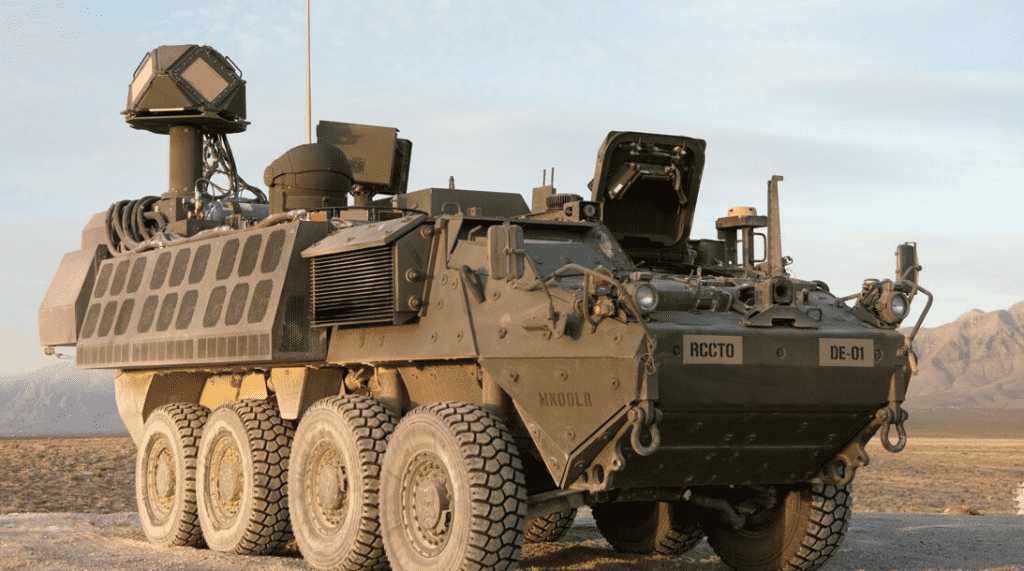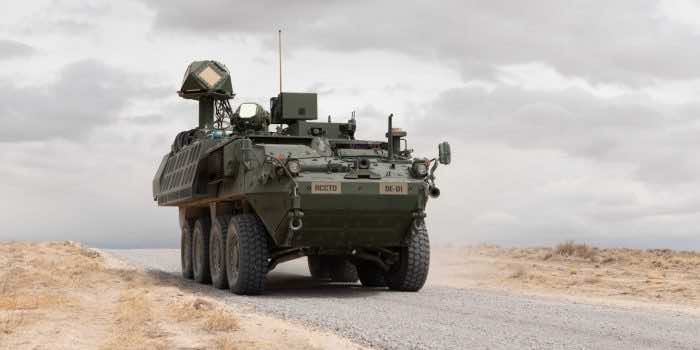In four weeks of continuous live-fire exercises, a team led by defence technology companies Raytheon Intelligence & Space, and Kord, a subsidiary of KBR, defeated multiple 60mm mortar rounds with a 50kW-class high energy laser integrated on a Stryker combat vehicle.
The energy weapon system, part of the United States Army’s Directed Energy Maneuver-Short Range Air Defense (DE M-SHORAD), acquired, tracked, targeted, and defeated several mortars and passed repeated tests replicating real-world conditions at the White Sands Missile Range in New Mexico. It is also said to have destroyed multiple small, medium, and large drones.
The contract is among the Army’s next-generation defensive line plans, including using invisible lasers mounted on vehicles to combat threats such as drones and ground-fired mortar shells.
It also coincides with Raytheon’s $5 billion Intelligence & Space campus expansion in McKinney, which is slated to bring 500 jobs in a new 200,000-square-foot production plant currently under construction.
Michael Hofle, the senior director for Raytheon’s high-energy laser business based in McKinney, said the laser project could be a smart alternative to the risky use of missiles to shoot unmanned aerial vehicles and counter rocket and mortar fire during combat situations.

“If someone is flying a drone and you are lobbing expensive missiles at it, you are going to lose in just the economics,” Hofle said. “The only cost with this is the few dollars of diesel fuel to charge the system.”
DE M-SHORAD intends to install a laser-defence system on top of one of the military’s Strykers. The system is designed to shoot down smaller threats, but it may eventually be powerful enough to shoot down larger cruise missiles or other weapons.

Raytheon and its partner Kord were previously vying against military contracting giant Northrop for the deal. However, Northrop dropped out last year due to technical concerns with its prototype, handing the contract to Raytheon’s team.
Raytheon has been tasked with building three more laser device systems and delivering them to the United States Army in September. It has even suggested using laser technology for commercial and public purposes, such as taking down unlicensed drones buzzing above sporting events.
According to Hofle, the main issue is developing a laser powerful enough to hit a target from a substantial distance and technology capable of identifying, tracking, and homing in on a single spot.
He also feels that employing a laser system with roughly the same power as tens of millions of handheld laser pointers is safer than using missiles, which could harm unintended targets.

The laser can readily pierce quarter-inch steel and put a plastic drone to rest. But, according to Hofle, the software is precise enough to not misidentify other things in the air, such as birds.
“There are a massive amount of algorithms and software needed to be able to direct this very specific beam of light,” he said.
Source: Raytheon


